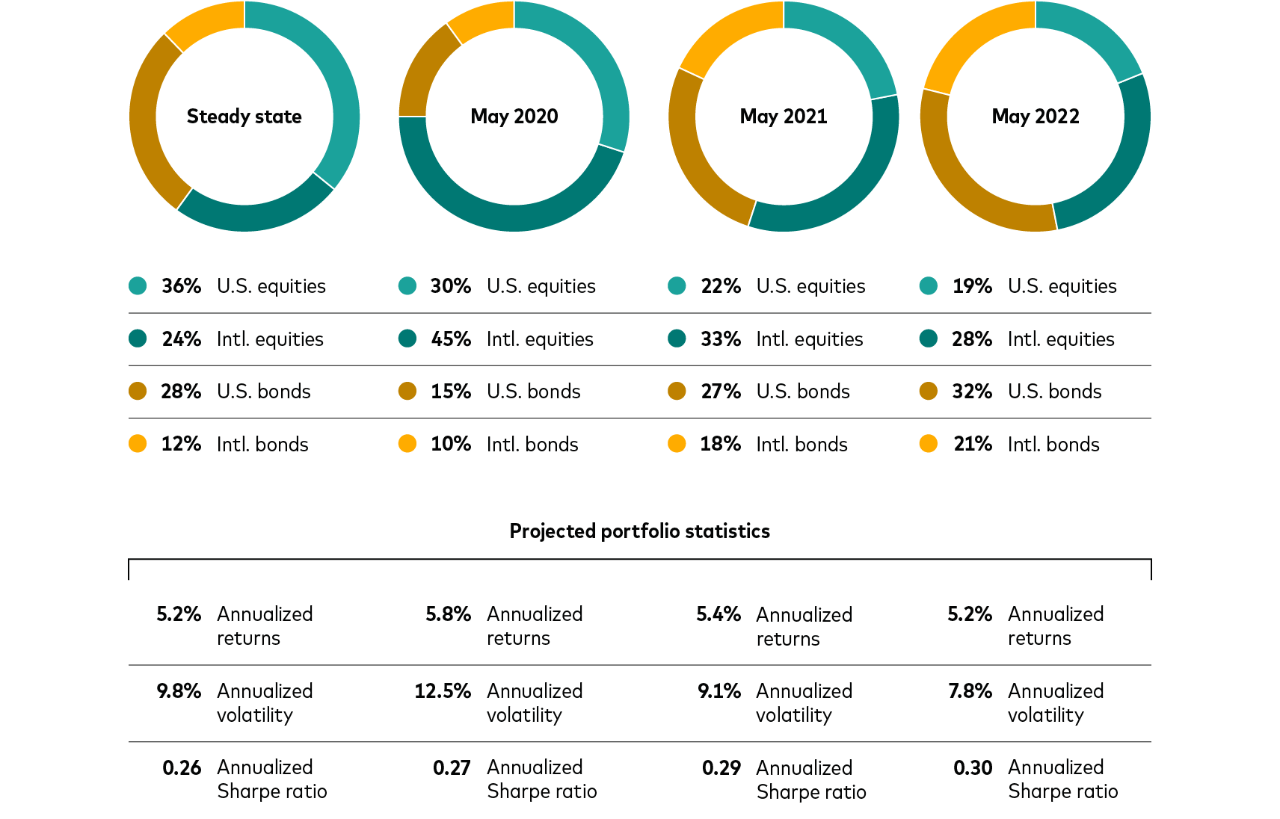Expert insight
A softer labor market doesn't mean rate cuts just yet
July 17, 2024
Official data suggest slowing momentum in the labor market, with the unemployment rate rising to a 30-month high and a key job-creation measure at a three-year low. A slowdown would be expected given the high interest rates that the Federal Reserve has deployed to fight inflation. However, the recent data come with caveats, and still-strong wage growth underscores our belief that Fed rate cuts aren’t imminent.
“The data certainly deserve attention,” said Adam Schickling, a Vanguard senior economist. “However, employment data can send conflicting signals, and it would be premature to suggest that the labor market has reached a significant turning point.”
The economy’s creation of 206,000 jobs in June was slightly higher than consensus, but downward revisions for April and May put the three-month average at 177,000, the lowest since early 2021. Much of the media’s focus has been on June’s 4.1% unemployment rate, the highest since November 2021.
“The job-creation and unemployment figures derive from two distinct surveys, one of businesses and one of households,” Schickling said. “The latter, which produces the unemployment rate, doesn’t quickly capture the effects of immigration and, when viewed monthly, can send false signals, given its relatively small sample size. Vanguard expects monthly unemployment rates to fluctuate between 3.8% and 4.2% before settling around 4% at year-end.”
In the near term, it’s possible that the unemployment rate will continue its modest climb. The unemployment rate’s three-month average may rise half a percentage point above the lowest three-month moving average over the prior 12 months—a threshold that has, in the past, signaled the start of a recession. However, other metrics suggest that the labor market remains tight, and we believe it’s more likely that the unemployment rate will tick lower in the coming months.
Average hourly earnings grew by 3.9% year-over-year in June, which was still well above the 3% level that would be consistent with the Fed’s target of 2% inflation. Additionally, the ratio of job openings to unemployed individuals is at 1.2:1—much lower than it was during the immediate recovery from the COVID-19 pandemic but still higher than equilibrium.
“The Fed will need to see deeper signs of weakness in the labor market or consistent, tamer inflation, or both, before cutting rates,” Schickling said. “Although that’s possible, we believe labor market conditions remain strong, and the hurdle for a 2024 rate cut remains considerable.”

Contributor

Adam Schickling,
Vanguard Senior Economist
Notes: All investing is subject to risk, including the possible loss of the money you invest.